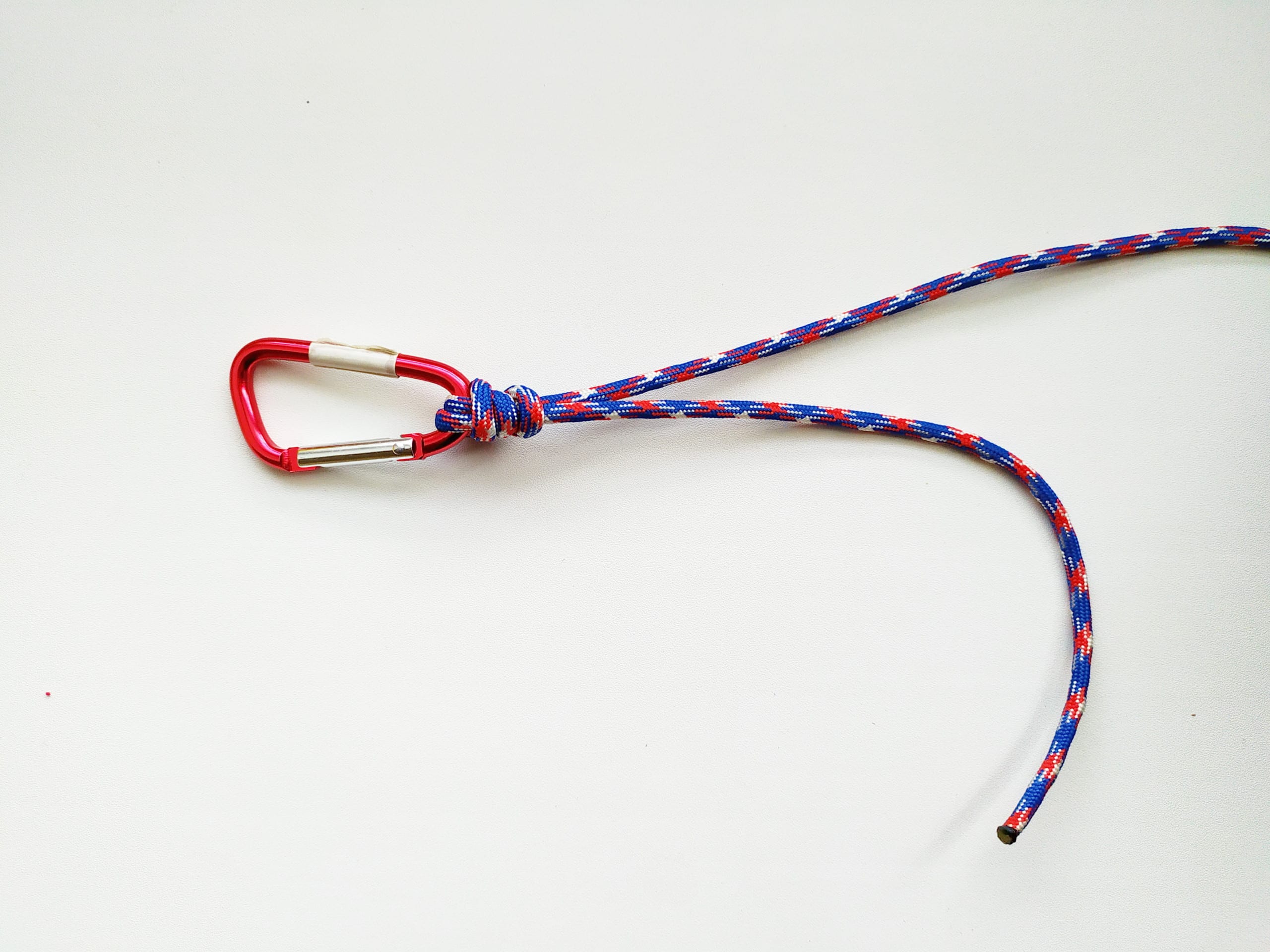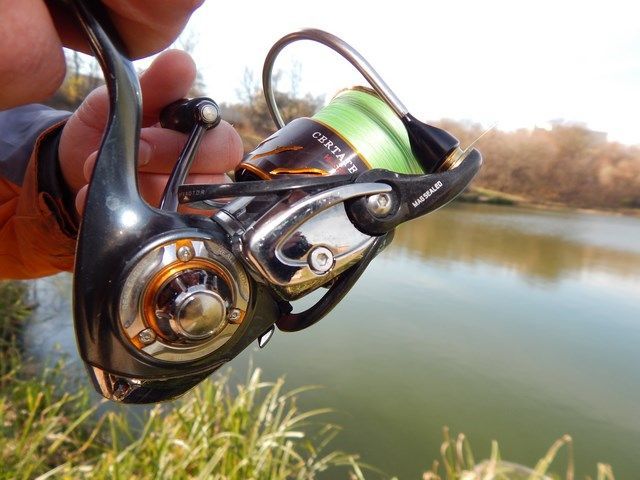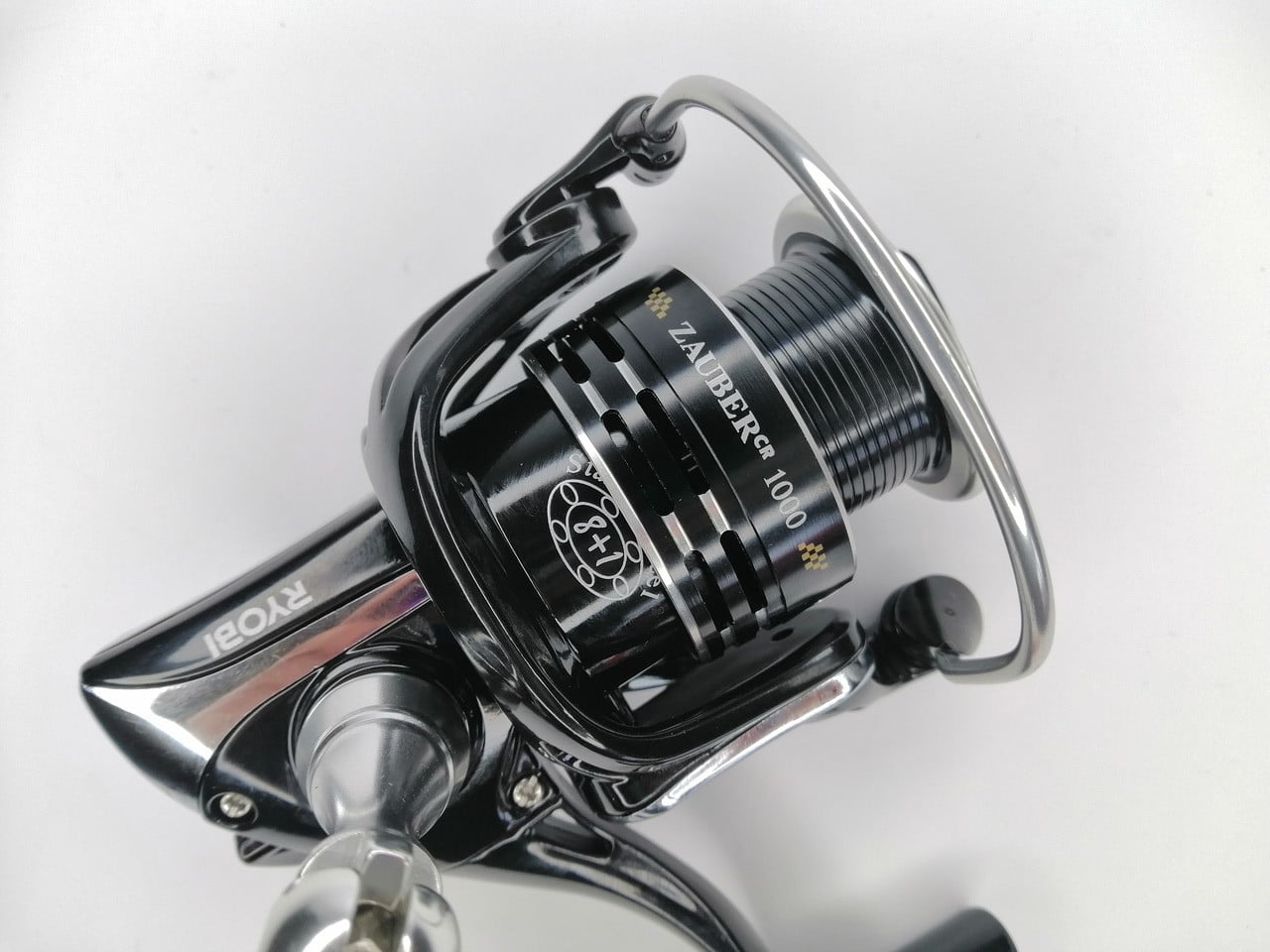To catch fish, you need to be well prepared. It is necessary to use the appropriate gear and only those knots that will not fail at the most inopportune moment. It will be difficult for a fisherman to accept the fact that a trophy fish got off the hook due to a badly tied knot. The Palomar knot is one of the most commonly used knots and has earned a solid reputation for a long time. Having learned how to knit it correctly and use it in various situations, the fisherman can be confident in the reliability of the connection.
Palomar – what kind of node is this, its purpose
This knot is widely used in spinning practice, a little less often among donors and feeders. It practically does not reduce the strength of the tackle. Ease of tying and efficiency allows both beginners and experienced fishermen to use it. To knit it, you need about 15 cm of fishing line. If you plan to use Palomar, this must be taken into account when determining its length. The knot connection is used for various purposes, including
crocheting, swivels, spinners and more. Depending on the application, various node modifications can be applied. The most common options will be discussed below. In most situations, a hook is tied with the help of Palomar, as well as accessories for the subsequent attachment of a bait or leash. In some cases, it is used to attach lead weights.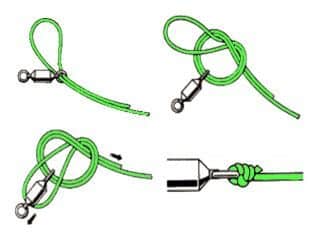
How to knit a classic palomar knot
In the classic version, Palomar is used for braiding, but it can be used for other types of lines. In some cases, if necessary, changes can be made to the knot knitting order.
Braid connection
This method of creating a node is considered classic. To tie this knot using braid, you will need to perform the following steps:
- To attach the hook, you need to fold the end of the cord in half.
- Double line must be passed through the eyelet.
- You need to tie a simple knot so that the eye of the hook is inside the knot. It is impossible to delay it at this stage.
- The double end of the cord is threaded through the loop.
- A hook is threaded through the resulting loop.
- Now you need to tighten the knot.
The procedure for creating a node can be seen in the figure:
Use for monofilament and fluorocarbon
These types of nodal connections are usually more subtle. Folded in half, they fit well even in the ear of a miniature size. In contrast, a double braid may not fit with a hole. In the latter situation, you will have to use other nodes.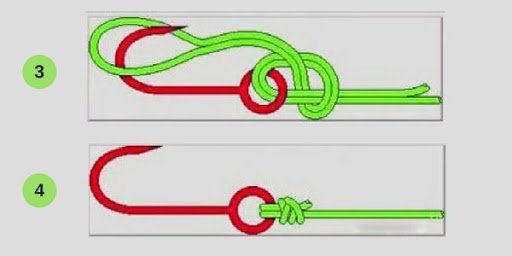
For a drop shot
In this case, a modification of the Palomar node is used. This is due to the peculiarities of using such equipment. Knitting is done as follows:
- The double line is threaded through the hole.
- Make a simple knot.
- A line is passed through it once.
- The hook is passed through the double thread.
- After that, a single line is threaded through the eye of the hook.
Thus, the hook is tied in such a way that it is attached directly to the main line along its length. The details of the procedure for tying the Palomar corner for the drop-shot rig are shown in the diagram below:
As a result of tying a knot, the hook should be oriented with the point up and parallel to the line.
Double palomar
The use of a double Palomar increases the strength and reliability of the knot. Its knitting is done as follows:
- The end of the line is folded in half.
- Pass it through the eye of the hook.
- Create a simple loop so that the eye of the hook stays inside it.
- The tip that comes out of the loop is passed through it one to three more times.
- Do not tighten the loop yet. The hook is threaded through the double end.
- The line is moved closer to the knot, and after that they begin to tighten. In this case, it is important that the loop is such that the line passes freely through the eyelet.
To clarify how the double Palomar is connected, you can study the following scheme:
It is important to note that despite the name of the knot, the tip can be threaded through the knot two to four times.
Improved Palomar node
Sometimes it is necessary to use a particularly strong knot in which case the Triple Palomar is suitable. It provides the greatest reliability, but requires increased line consumption. It is often used for braiding. Tying is done using the following actions:
- The end of the line is folded in half.
- It needs to be threaded through the eye of the hook or bait.
- After that, the double end is wrapped around the main part of the line.
- It is threaded through the resulting loop. Then it is wrapped around its side 6 times.
- A hook is threaded into the loop. It is moved to the knot.
- The knot must be wet and tightened.
If the braid is tied in this way, then you need to pay special attention to thorough wetting. This will prevent friction from affecting the cord.
This variety is not suitable for use with fluorocarbon line.
Palomar knot for hook: https://youtu.be/TzO-TsLbJW4
Other options
All variants of this node are based on the general rules:
- The double end of the line is threaded through the eyelet.
- A simple node is created.
- The double thread is threaded through the loop.
- The hook is threaded through the double end.
However, there are options that differ from the basic option. They look like this:
- A double thread is threaded into the eyelet not once, but twice. In this case, the fisherman will have difficulty trying to use a line that is too thick. This kind of knot is rarely used with fluorocarbon line.
- The thread passes into the eyelet three times. For these purposes, only sufficiently thin fishing line or hooks with a large eye can be used. These hooks are durable and comfortable, but may not be used in all cases.
The options also differ in the number of times the line is threaded through the loop. In various situations, this happens from one to six times. In this case, the reliability of the connection increases, but the line consumption increases. How to knit a Palomar knot correctly: a detailed diagram and a visual video explanation: https://youtu.be/RCq_uUxDc4I
Pros and cons of nodal connection
Using this node allows you to take advantage of the following benefits:
- The advantage of such a knot is that its use is effective for braiding , fluorocarbon line , mono line .
- High bond strength. Palomar knot provides 95% reliability.
- The use of this knot minimizes the risk of it unraveling.
- The simplicity of the knot knitting procedure.
- The palomar shows high resilience when the fish is trying to escape.
As a disadvantage, the following is noted:
- When tightening, you need to pay attention to the size of the resulting loop. It should be such that the thread passes easily through the eyelet.
- You have to spend a lot of fishing line to create a knot.
- Not suitable for crochet hooks that do not have an eyelet .
Confident tying of this knot will become a reliable assistant to the fisherman in various situations.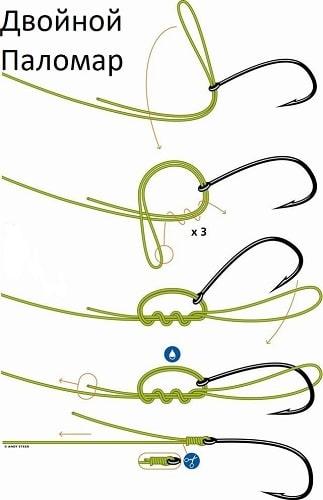
Typical mistakes
It annoys some fishermen that a significant amount of line is spent to create a knot. This problem is exacerbated if you have to tie it up many times during one fishing trip. In this regard, they are trying to look for more economical options for the Palomar node. However, this is not recommended, since in such cases options are used that do not provide the required strength. If the knot is too loose, it can come loose during fishing. One of the reasons for this may be insufficient wetting of the line. In this case, due to friction, the knot will not be able to become strong enough. When the knot is tied, it is required to trim the protruding tip. Some fishermen cut it close. In this case, with significant mechanical stress, the knot can be decoupled. To prevent this, you need to leave the tip at least 3 mm long.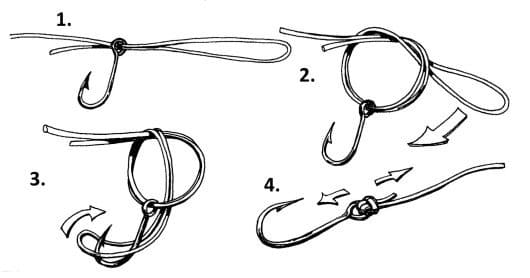
Practical tips
To reduce line consumption, you need to try to make the resulting loop as miniature as possible. However, you cannot change the knot creation technique. The knitting procedure is relatively simple, however, for confident use, you need to bring your skill to automatism. The knot does not need to be used with threads that have poor tensile strength. In some cases, it is difficult to thread a double line through the eye of the hook. In this case, you can thread the single thread in the desired direction, and then do it in the opposite direction.
